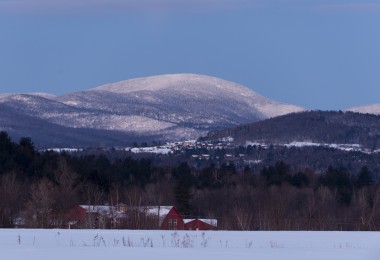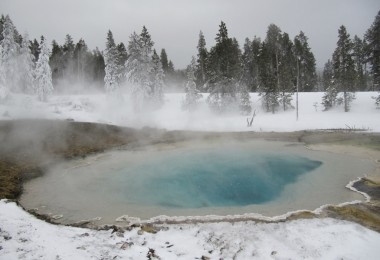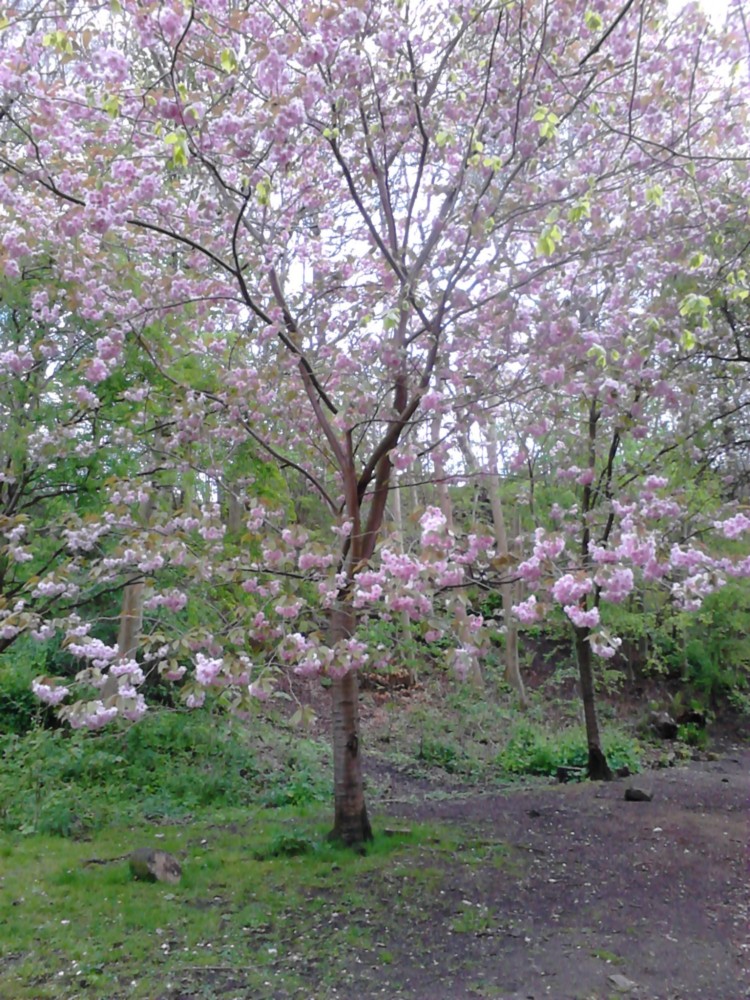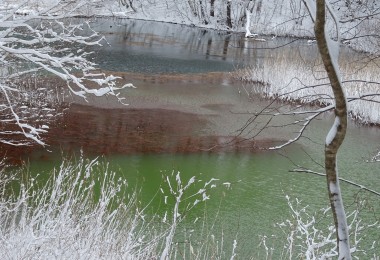It’s winter in Northern Minnesota. Snow is banked three feet high along the sides of Highway 61 and a foot of fresh fallen snow blankets the driveway. It is a sticky snow that clings to the branches of the trees, the road signs and even the stalks of weeds in the ditches. The trees lining the driveway form a white canopy overhead so that it feels as though I’m driving into one of those sugared-egg dioramas that we used to admire each Easter when I was a child.
I park the car in front of the house and walk down to Lake Superior. A thin sheath of ice has formed on the lake’s surface, pinning it to the shore. Usually the waves clash violently with the rocks and the ice must form farther out, away from its angry edges. Today it is still and it seems as though I’m witnessing the formation of the ice, knitting itself together crystal by crystal across the lake.
I walk the shoreline, carefully picking my way, step by step, selecting dry patches on the rock so that I won’t slip into the frigid water. I crouch to inspect a bubble of air, kidney shaped, trapped under the ice on a rock. Rivulets of water pulsate along its edges, under the ice, slithering down toward the lake. It reminds me of something I saw in biology class in high school as I peered into the lens of a microscope: a protozoa swimming across a glass slide. Life, where it seemed there was none.
I think of these things: of the November gales that give the lake her voice, the language of crash and gurgle and sputter, and I stop to listen to what the lake might say today . . . she whispers . . . ping . . . tinkle . . . a sound like breaking glass. Off the shore at the edge of the ice, I watch as the water rocks in response to something that has happened farther out in the lake and as it rolls into the ice, small splinters and shards stick up at odd angles, the sun glinting off the sharp blades formed by the undulating water.
Sunset arrives earlier on the North Shore than in the Cities and as the daylight fades, I’m chilled, but before I head into the house, I watch the sun disappear over the hill, like a copper penny dropping into a slot.
I wake to sunshine streaming in the window the next morning. Outside my bedroom window, blue sky is framed by white birch. The nuthatches and chickadees are awake, hopping from branch to branch, and a redheaded woodpecker is at work on the dead birch near the woodpile. The snow is blindingly white and its surface temporarily unbroken.
I pad downstairs in my slippers to let the dog out and start the coffee. Kirby chases a red squirrel up a tree where it chatters and shakes its tale at him in a reproof. I start my day here at Selah as I have many other mornings: lying on my back, looking up at the pine ceiling to identify figures in the grains of wood, kind of like when I was a kid and I picked out shapes in the clouds.
Today, I would snowshoe the Kadunce River, angling through the narrow canyon toward the waterfall. After a breakfast of banana-oatmeal pancakes, I jumped in the truck and headed east. Kirby was anxious to explore and smiled at me from the back seat. I was hoping that he behaved and stayed away from the open bowls of water that we’d encounter along the river. I parked. Kirby bounded from the car and I strapped on my snowshoes. I followed the trail to the frozen river—the dog running ahead, and then running back to check on me. This is how we hike. He gets twice as much exercise as I do—which is good, because he’s a Brittney (think Springer Spaniel on drugs). Unfortunately, when he runs he gets thirsty, and the small holes of open water look inviting. Very tempting. Very dangerous. I have to keep calling his name to keep him on track. Over and over. He has a short memory.
I dig in with my snowshoes and hike up a small cascade. I feel like a spy with access to the world’s top secrets. In the spring, I follow the Superior Hiking Trail at the edge of the river. The trail veers off into forest of old cedar, white pine, spruce and birch. In the summer, I pick wild blueberries and make them into tarts back at Selah. But in winter, when the river is frozen, I can explore its secret places, the places where over thousands of years it has cut through the rock and scooped out the now frozen basin at the bottom of the waterfall. It seems a more intimate exploration.
Walking the river’s frozen surface, I imagine the water flowing beneath my feet, over the rocks, cascading, curling, unfurling toward the lake. In the summer, the open places are deep pools, places where the water swirls and swells or spins in a tight vortex, creating little meringue cakes of foam that bob on the surface.
Farther up the river, the passage through the canyon constricts. I can stretch out my arms on both sides and touch the stone walls. The rhyolite walls rise 75 feet overhead and look like layered tablets of stone. Around the next curve, there is a small heap of rock that has tumbled down the gorge. The rock is oxidized and crumbles easily; I avoid using the walls for support.
I hear water rushing in the distance and know that I’m approaching one of the waterfalls; it’s breathtaking. Near the top, frozen billows of water hang in a solid white mass of ice, gradually thinning as I follow the path of the water with my eyes, until it is a glassy sheath through which I can see the water rushing. The last foot is open and the water gushes and splutters into a hole in the basin.
I squat and watch the water pounding into the opening, feeling the spray on my cheeks and hair and the force of the water reverberating in my chest. Standing here in the frozen basin, it seems as though I have found an arctic bath, a place where ancient man stood, as beads of water gathered on his skin, running in rivulets down his legs before he plunged into the frigid pool. The air in the basin is still, the canyon walls are a great wind barrier, but still, I shiver in the damp.
As I call Kirby back from the rushing water, my voice echoes off the canyon walls, and for a moment he is confused, looking up, this way and that, trying to find the source, as though small gnomes taunt him like the squirrel. In the echoes, I hear the ancient days calling, the hundreds of thousands of years that the water has dripped and cascaded over the topography, cutting its way deep into this ravine, hiding the river here, tucked away in the woods and the rock.






Leave a Comment